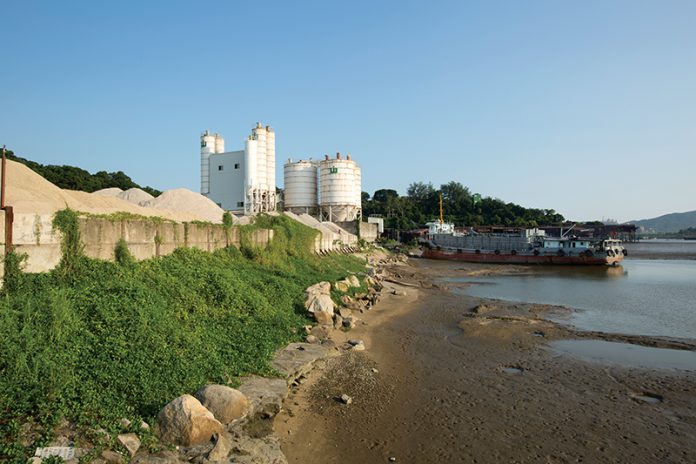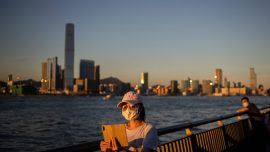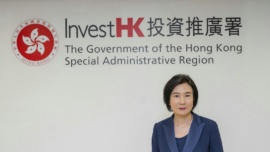Until the mid-1970s Coloane was just forest, a few houses, and supported little more than handicraft industries such as the shipbuilding yards. “Residential land use increased between 1972 and 1983 as a result of population growth from 1,871 persons to an estimated 4,228 between 1970 and 1981,” according to the research of Professor Richard Louis Edmonds.
Two factors contributed decisively to the change of profile of the island: the construction of the causeway to Taipa in 1968 (which six years later benefits from the inauguration of the first bridge) and the arrival in 1974 of Governor Garcia Leandro.
Considered by many to be the most important Governor of Macau of the 20th Century, Leandro intervened decisively in the then Portuguese administered territory and Coloane did not escape.
To Macau, with a density of 55,000 inhabitants per square kilometre, the space available to the islands of Taipa and Coloane, although underdeveloped and with very weak infrastructure, was lacking, observed the former Governor in his memoirs.
Several times the then-Brigadier Leandro used the expression “Macau has to grow to the islands,” with one of the priorities being the construction of the Coloane Power Plant, which would supply the entire territory. Involving the construction of two small dams (Ká-Hó and Hac Sá), the Thermal Power Plant started generating energy in June 1978.
Garcia Leandro’s list of priorities, some of them inherited from his predecessors, included three major projects for Coloane: a deep-water port, an industrial park (near the causeway) and the construction of a tourist complex.
Looking back, we realise that it was at this moment that Coloane was designed as we know it today: the port is situated in Ká-Hó, the industrial park is that of Concordia (inaugurated in 1975) and the construction of a tourist complex was completed with the opening in 1993 of the Westin Resort (now Grand Coloane) in Hác-Sa.
In the master plan realised at the time it was decided that the tourist enterprises would be concentrated in the south of Coloane, with industries and services relegated to the north.
Garcia Leandro’s intervention was so decisive that it can be said that Coloane only came back to live a structural moment when, 30 years later, the Macau SAR Government decided to build the mega housing project in Seac Pai Van.
 Being the largest public housing complex, fully funded by the MSAR Government, it has demanded and continues to require various social facilities related to transportation, lifestyle, health, education, dry goods sales market, sports and recreational activities, and social services: next year the Health Centre should be inaugurated and also in 2019 construction of the new Seac Pai Van Water Treatment Plant should begin, to mention but two of the largest associated ventures.
Being the largest public housing complex, fully funded by the MSAR Government, it has demanded and continues to require various social facilities related to transportation, lifestyle, health, education, dry goods sales market, sports and recreational activities, and social services: next year the Health Centre should be inaugurated and also in 2019 construction of the new Seac Pai Van Water Treatment Plant should begin, to mention but two of the largest associated ventures.
On the other side of the island, the Ká Hó area has also undergone major transformation: today, it houses not only the port (the construction works of the first phase ended in 1991) but also the Macau Container Terminal, the Macau Oil Terminal, the docks of the Macau Cement Manufacturing Company and the Macau Electricity Company.
It may not seem like it – because despite everything there is still a lot of green in Coloane – but the island has changed a lot in the last 40 years.
So much so that when acclaimed Sinologist Richard Louis Edmonds did his research in Coloane (Land Use in Macau – changes between 1972 and 1983) he was still talking about the existing agriculture on the island, fearing for its reduction due to the pressure of real estate developers.
Can anyone find a cabbage planted in Coloane today?
Housing instead of factories?
The land available in Macau is so scarce that it is public knowledge and discussed in political circles – it is enough to see what has happened in the reversion of leased land to the Macau Government.
One of the areas where there is free land is in the industrial area of Seac Pai Van, between Lai Chi Vun and the Lotus Flower marginal avenue (or the golf course).
It seems clear that there has been no significant manifestation of interest on the part of new industries to settle in Concordia Industrial Park but whatever is decided has to take into account that there will continue to exist factories (future guests of the new hotel The 13 will have this view at the rear of the building).
Macau Business has contacted the public company that manages Concordia Park to ask how many companies there are and capacity but unfortunately have not received a response.
























